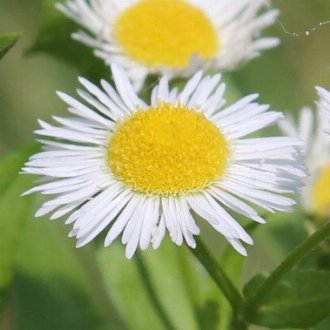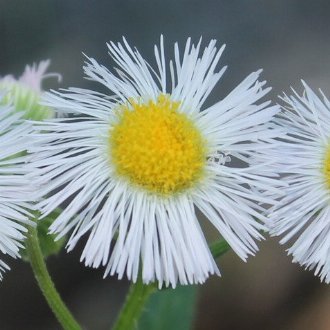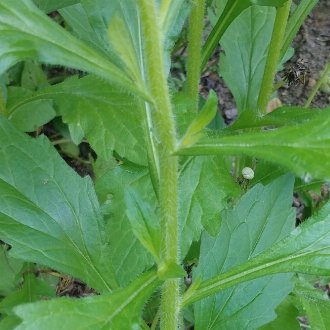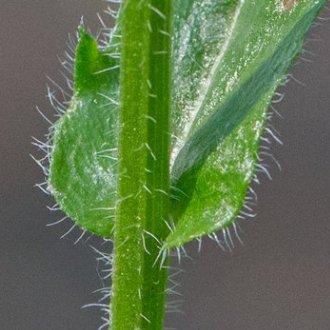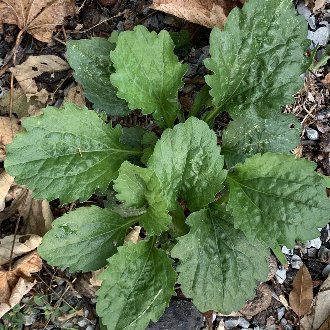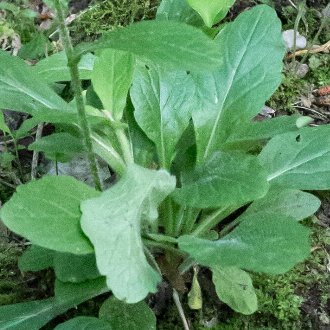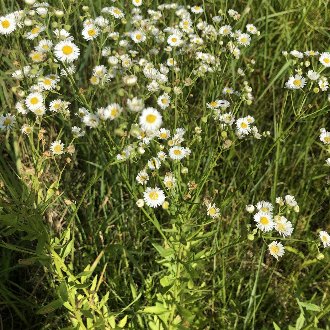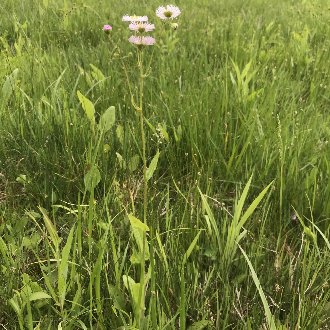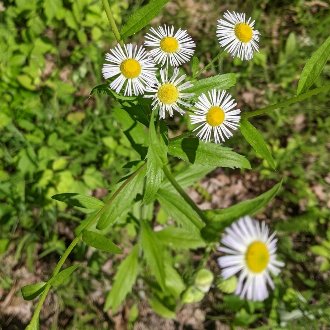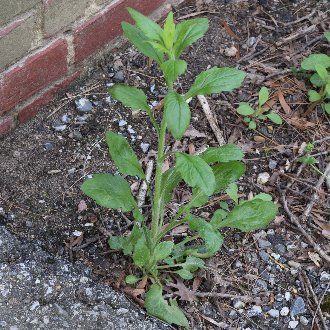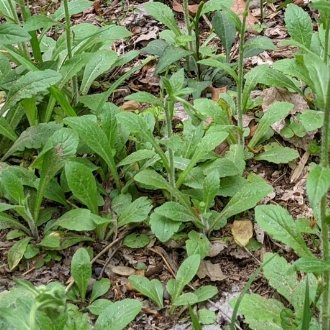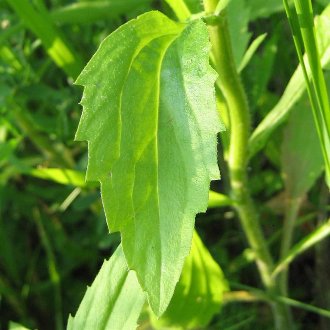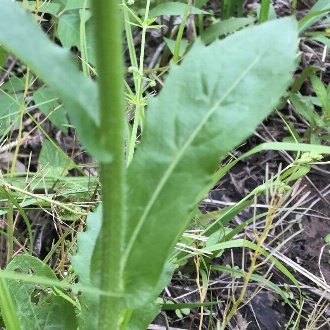Annual Fleabane vs Philadelphia Fleabane
These visually-similar species often occur together in the same habitat. Flowers can be distinguished by width and count of rays; leaf bases clasp the stem on E. philadelphicus but not on E. annuus. There are other major differences in leaves and growth habit, but the variability of both species makes these characteristics trickier to rely on for identification. On average, E. philadelphicus blooms earlier, but both species have variable bloom times. E. annuus ventures into slightly drier and slightly more disturbed sites, and usually cannot survive in mowed lawns, whereas E. philadelphicus is more restricted to moist sites and is more likely to persist in lawns.
Annual Fleabane (Erigeron annuus) | Philadelphia Fleabane (Erigeron philadelphicus) |
A common weedy annual or biennial native to Eastern North America, and introduced along the West Coast and nearby interior regions. | A common and widely-distributed biennial or short-lived perennial of moist sites, native across North America. |
Ray florets are wider, but less numerous (40-100). Photo © Violet T., CC BY 4.0. | Ray florets are narrower (<=0.5mm) and more numerous (150-250, rarely 100-400), leading to a wispy appearance. Photo © Violet T., CC BY 4.0. |
Leaf bases do not clasp or only barely clasp the stem. Photo © the swamp ass, CC BY 4.0. | Leaf bases conspicuously and strongly clasp the stem. Photo © Bill Keim, CC BY 4.0. |
Leaves of basal rosettes broader and shorter; central veins less prominent. Leaves often more wrinkled around major veins. Photo © Sandy Wolkenberg, CC BY 4.0. | Leaves of basal rosettes longer and narrower, often with more prominent central veins. Leaves average flatter and less wrinkled. Photo © Bill Keim, CC BY 4.0. |
Averages taller, up to 3.5 feet. Stems tend to branch more, usually in the top half of the plant, often leading to more numerous flowerheads per stem. Photo © John Kees, Public Domain. | Averages shorter, between 9 inches and 2.5 feet tall. Stems usually do not branch at all until right under the inflorescence, leading there to be fewer flowerheads per stem. Photo © Alex Goodfriend, CC BY 4.0. |
Basal leaves are usually withered or absent at the time of flowering. Plants usually die after flowering. Photo © Benoit Renaud, CC BY 4.0. | Basal leaves often persist to and sometimes past the time of flowering. Plants may be perennial. Photo © Andrew Sebastian, CC BY 4.0. |
Plants never spread rhizomatously; clusters of plants only originate when multiple seeds germinate in the same location. Photo © , CC BY-SA 4.0. | Some populations of plants, especially on favorable sites, can form clonal colonies connected by underground rhizomes. Photo © R. DN., CC BY 4.0. |
If serrated, leaves are usually coarsely serrated. Leaves taper more consistently both at tip and base, and widest part of the leaf is closer to the midpoint of each leaf. Photo © rboles, CC BY 4.0. | Leaf margins may be coarsely serrated, or have crenate margins (with rounded teeth) or finer, less pronounced serrations. Width of leaves is more constant along the length of the leaf, and widest part of the leaf is closer to the tip. Photo © Kelly Bostian, CC BY 4.0. |
References & External Resources
These short lists show only links helpful for ID. For a complete list of references and resources also covering other aspects of ecology, visit the links section of the full article on each plant, which is the first entry here.



